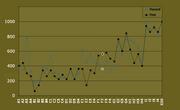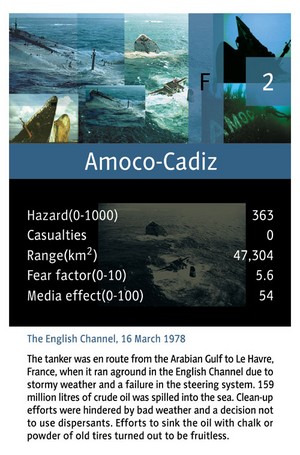|

Amoco-Cadiz was en route from the Arabian Gulf to Le Havre, France, when it ran into stormy weather. On 16 March 1978, it ran aground in the English Channel due to a failure in the steering system.
The entire cargo of more than 159 million litres of oil was spilled into the sea. Approximately 200 miles of the British coastline and beaches of 76 different French communities were polluted.
Bad weather conditions and the isolated location of the wreck prevented any clean-up efforts for the two weeks following the incident.
Furthermore, the ship broke in two before any oil could be pumped out of the wreck. The wind rapidly spread the oil along the French and British coastlines. One month after the spill the total extent of pollution included more than 300 kilometres of coastline. In some beaches the oil penetrated the sand, in others it stayed like an asphalt layer for years.
A great effort was made to prevent the oil from spreading further, but as French authorities had decided not to use dispersants, it was a struggle to find other ways of dealing with the problem.
Efforts to sink the oil with chalk or powder of old tires turned out to be fruitless, because the oil was too viscous. A better result was achieved cleaning shores with high-pressure hot water.
The accident was disastrous to the wildlife. Thousands of birds and oysters were killed, along with innumerable fish. Fish caught in the area had tumours and an ominous taste of petroleum. It was one of the worst oil accidents in history.
Comment this page
 
Links and references:
About the environmental effects:
http://greennature.com/article219.html
A quick overview:
http://www.aber.ac.uk/iges/cti-g/STHAZARDS/seaempr...
|

|
|



